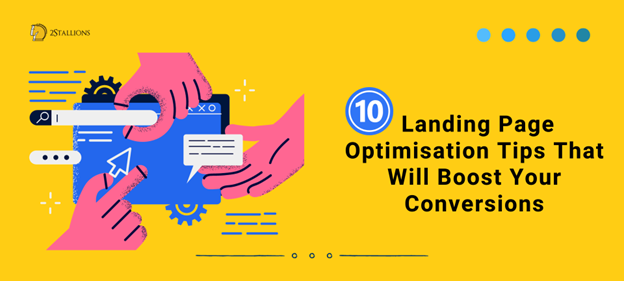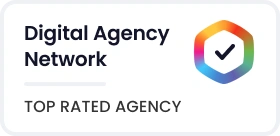Content
SHARE

In digital marketing, the term ‘Ad Exchange’ carries significant weight. It is a pivotal concept that underpins many of the advertising strategies businesses employ in the digital age. This glossary entry will delve into the intricacies of Ad Exchanges, elucidating their role, function, and importance in the broader context of digital marketing.
Ad Exchanges are essentially digital marketplaces where advertisers and publishers buy and sell advertising space, often through real-time bidding. This process is automated, making it a key component of programmatic advertising. Understanding Ad Exchanges is crucial for anyone involved in digital marketing, as they are a primary mechanism for placing digital ads.
Understanding Ad Exchanges
At its core, an Ad Exchange is a platform that facilitates the buying and selling of digital ad inventory between advertisers and publishers. It operates much like a stock exchange, with ad space being the commodity that is traded. Advertisers bid on the ad space that publishers offer, with the highest bidder winning the right to display their ad.
Ad Exchanges are a key component of the programmatic advertising ecosystem, which also includes Demand Side Platforms (DSPs), Supply Side Platforms (SSPs), and Data Management Platforms (DMPs). These platforms work in tandem to automate the process of buying and selling digital ad space, making it more efficient and cost-effective.
The Role of Ad Exchanges in Digital Marketing
Ad Exchanges play a critical role in digital marketing by providing a platform for advertisers and publishers to connect and transact. They provide transparency and control that was previously unavailable in traditional media buying. Advertisers can select the specific websites, apps, or other digital platforms where they want their ads to appear and set the price they are willing to pay for each impression.
For publishers, Ad Exchanges offer a way to monetise their digital content by selling ad space to the highest bidder. They can also set minimum price thresholds and choose which types of ads they are willing to display. This gives them control over the ads that appear on their platforms and helps to ensure that they are relevant and appropriate for their audience.
Real-Time Bidding and Ad Exchanges
Real-Time Bidding (RTB) is a key feature of Ad Exchanges. It is a process by which advertising inventory is bought and sold on a per-impression basis, via an instantaneous programmatic auction. This auction takes place in the time it takes a webpage to load, which is typically a fraction of a second.
RTB has revolutionised digital advertising by making it possible to target ads to specific users in real-time. When a user visits a website, information about them and the context of their visit is sent to an Ad Exchange. Advertisers then use this information to determine how much they are willing to bid for the opportunity to serve an ad to that user. The highest bidder wins the auction and their ad is served to the user.
Types of Ad Exchanges
There are several types of Ad Exchanges, each with its unique characteristics and advantages. The three main types are open Ad Exchanges, private Ad Exchanges, and programmatic direct.
Open Ad Exchanges are public marketplaces where any advertiser or publisher can buy or sell ad inventory. They offer a wide range of inventory and are typically used for broad targeting and reach. Private Ad Exchanges, on the other hand, are invite-only marketplaces where publishers offer their ad inventory to a select group of advertisers. They are typically used for premium inventory and offer more control over where ads are placed.
Open Ad Exchanges
Open Ad Exchanges are the most common type of Ad Exchange. They are open to all advertisers and publishers, regardless of size or industry. This openness leads to a large and diverse pool of ad inventory, making open Ad Exchanges ideal for advertisers seeking broad reach and targeting capabilities.
However, this openness also has its drawbacks. Because anyone can buy or sell ad inventory on an open Ad Exchange, there is a risk of low-quality or inappropriate ads appearing on a publisher’s platform. There is also a risk of ad fraud, where fraudulent publishers serve ads that are never actually viewed by real users.
Private Ad Exchanges
Private Ad Exchanges are a more exclusive version of open Ad Exchanges. They are invite-only marketplaces where a select group of premium publishers offer their ad inventory to a select group of advertisers. This exclusivity leads to a higher quality of ad inventory and a greater level of control over where ads are placed.
Typically, Private Ad Exchanges are used by premium publishers who want to maintain control over their ad inventory and the ads that appear on their platforms. They are also used by advertisers who want to ensure their ads are displayed in a high-quality environment. This exclusivity comes at a cost, with higher prices for ad inventory compared to open Ad Exchanges.
Benefits of Using Ad Exchanges
Ad Exchanges offer a number of benefits for both advertisers and publishers. For advertisers, the main benefits are the ability to reach a large and diverse audience, the ability to target ads to specific users, and the ability to control the price they pay for ad impressions.
For publishers, the main benefits are the ability to monetise their digital content, the ability to control the ads that appear on their platforms, and the ability to set minimum price thresholds for their ad inventory. Additionally, because Ad Exchanges operate in real-time, both advertisers and publishers can make adjustments to their strategies on the fly, based on the performance of their ads.
Efficiency and Cost-Effectiveness
One of the main benefits of using Ad Exchanges is the efficiency and cost-effectiveness they offer. Because the process of buying and selling ad inventory is automated, it eliminates the need for manual negotiations and contracts. This makes the process faster and more efficient, and also reduces the risk of human error.
Additionally, because advertisers can set the price they are willing to pay for each impression, they can ensure that they are getting the best possible return on their investment. They can also use real-time data to adjust their bids and targeting strategies as needed, making their advertising efforts more effective and cost-efficient.
Targeting and Personalisation
Ad Exchanges also offer advanced targeting and personalisation capabilities. Because they operate in real-time, they can use data about users and their online behaviour to serve ads that are highly relevant and personalised. This can lead to higher engagement rates and a better return on investment for advertisers.
For example, an advertiser could use an Ad Exchange to target ads to users who have visited their website in the past, or to users who have shown an interest in their products or services. They could also use demographic data, such as age, gender, and location, to target their ads to specific groups of users.
Challenges and Considerations
While Ad Exchanges offer many benefits, they also present some challenges and considerations. These include issues related to privacy and data protection, the risk of ad fraud, the need for transparency and control.
As with any technology, it’s important for advertisers and publishers to understand these challenges whilst taking steps to mitigate them. This might involve using reputable Ad Exchanges and Demand Side Platforms, implement robust data protection measures, closely monitoring ad performance and user engagement.
Data Privacy and Protection
One of the main challenges associated with Ad Exchanges is the issue of data privacy and protection. Considering Ad Exchanges use of data about users and their online behaviour to target ads, they must comply with data protection laws and regulations. This can be a complex and challenging task, particularly in regions with strict data protection laws, such as the European Union.
Advertisers and publishers must ensure that they are collecting, storing, and using user data in a way that is compliant with these laws. This might involve obtaining user consent before collecting data, anonymising data to protect user privacy, and implementing robust security measures to prevent data breaches.
Ad Fraud
Another challenge associated with Ad Exchanges is the risk of ad fraud. This occurs when fraudulent publishers serve ads that are never actually viewed by real users. Instead, they use bots or other deceptive tactics to generate fake impressions and clicks, in order to earn revenue from advertisers.
Ad fraud is a serious issue that can lead to significant financial losses for advertisers. To mitigate this risk, advertisers and publishers can use fraud detection tools and services, choose to work with reputable Ad Exchanges and Demand Side Platforms that have robust fraud prevention measures in place.
Conclusion
In conclusion, Ad Exchanges are a crucial component of the digital marketing landscape. They provide a platform for advertisers and publishers to buy-sell ad inventory in real-time, making the process more efficient and cost-effective. They also offer advanced targeting and personalisation capabilities, which can lead to higher engagement rates and a better return on investment for advertisers.
However, like any technology, Ad Exchanges also present some challenges and considerations. These include issues related to data privacy and protection, the risk of ad fraud, the need for transparency and control. By understanding these challenges and taking steps to mitigate them, advertisers and publishers can make the most of the opportunities that Ad Exchanges offer.
Ad Exchange FAQs
What is an Ad Exchange?
An ad exchange is a digital marketplace that enables advertisers and publishers to buy and sell advertising space, typically through real-time bidding (RTB). This platform connects buyers and sellers across a network, allowing for automated transactions of ad placements based on specified criteria.
How does an Ad Exchange differ from an ad network?
While both ad exchanges and ad networks facilitate the sale of ad space, ad exchanges provide a more transparent and dynamic bidding environment where multiple buyers can bid on the same inventory in real-time. Ad networks aggregate ad space from publishers and sell it to advertisers at set prices.
What are the benefits of using an Ad Exchange?
Benefits include increased transparency, as buyers know where their ads are being placed and sellers know who is buying their space. There is also greater control over pricing due to the auction-based model, and efficiency in ad placement as automation streamlines the buying-selling process.
What should advertisers consider when participating in an Ad Exchange?
Advertisers should consider their target audience, budget, and campaign goals. They should be mindful of ad quality, the credibility of publishing platforms, and potential for ad frauds. Utilising data analytics and optimization strategies within these exchanges can also enhance campaign performance.












